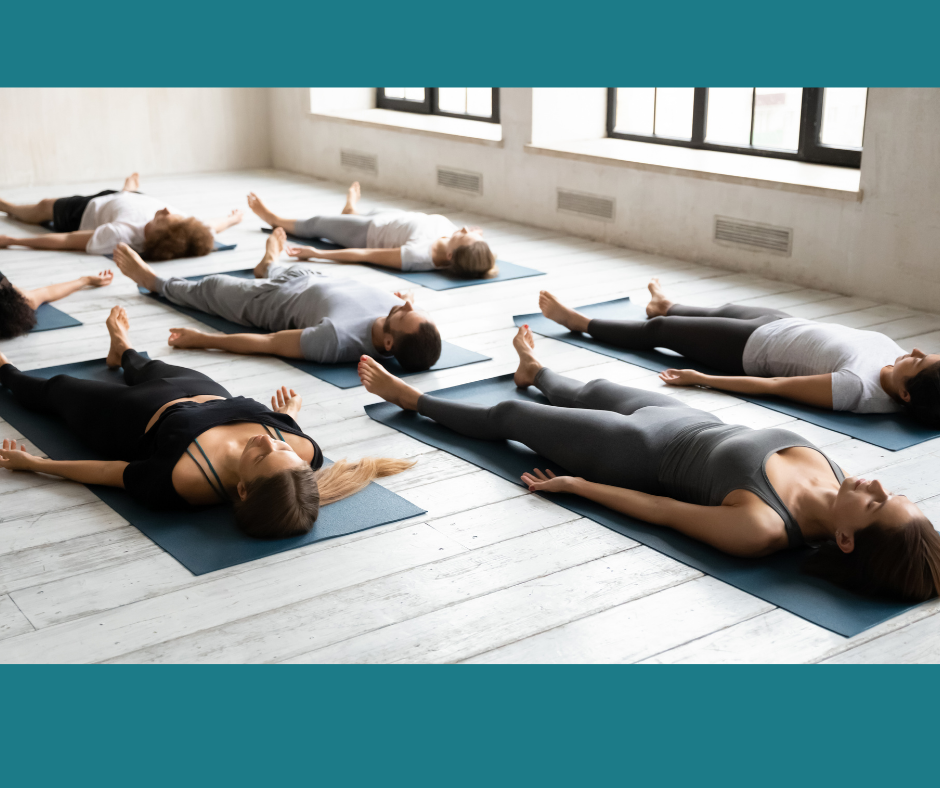What’s This Research About?
Practitioners of yoga have different intentions with their practice; such as cultivating spirituality, calming the mind, or being physically active through yoga poses and movements (asana). Googling ‘yoga’ results in thousands of reasons why yoga is the best tool for your health and an efficient path to fitness – often accompanied with blurry concepts of how and why.
The level of intensity in your physical practice can tell you what you can expect as health and fitness outcomes. Health recommendations for physical activity are based on intensity classifications (in aerobic activity). The primary recommendation is 150 minutes of moderate aerobic activity or 75 minutes of vigorous aerobic activity per week. These recommendations are used by the World Health Organization, American Heart Association, and many nations and organizations around the world.
Health benefits (with strong evidence) for people who are more physically active include:
- lower rates of all-cause mortality, coronary heart disease, high blood pressure, stroke, type 2 diabetes, metabolic syndrome, colon cancer, breast cancer, and depression
- lower risk of a hip or vertebral fracture
- higher level of cardiorespiratory and muscular fitness
- more likely to achieve weight maintenance and have a healthier body mass and composition.
If pursuing physical activity for health is one of your intentions with yoga practice, how does it hold up against these recommendations and standards?
The authors of this paper describe how assumptions are made in earlier research when assessing the level of intensity in yoga. For instance, a yoga pose or a single sequence was viewed as equivalent to an entire yoga class, or they assumed that all yoga poses elicited the same physiological responses. This is problematic when assessing yoga’s level of intensity, so the authors addressed it.
The study examines the intensity level of yoga practice (1) between different yoga styles and (2) within styles of yoga.

TITLE: Range of Yoga Intensities From Savasana to Sweating: A Systematic Review
PUBLICATION: Journal of Physical Activity and Health
DATE: 2020
AUTHORS: Forseth, B., & Hunter, S. D.
Heart rate (HR): HR is a measure of the number of contractions (beats) of the heart per minute (bpm). It is used to classify levels of intensity based on the percentage of maximal HR as follows:
light = 35-54% HRmax
moderate = 55-69% HRmax
vigorous = 70-89% HRmax
Metabolic Equivalent of Task (MET): MET is a ratio measurement of energy expenditure relative to a person’s mass. One MET is defined as the oxygen consumed while sitting at rest. The authors used it to classify the level of intensity; if METs were listed as an outcome or if percentage of VO2max was not provided.
Intensity classifications for METs were as follows:
light = 1.6-2.9 METs
moderate = 3-5.9 METs
vigorous = 6.0-9.0 METs.
Oxygen consumption (VO2)
The intensity level classifications of oxygen consumption were based on percentages of maximal oxygen consumption (%VO2 max) and proceeded as follows:
light=20-40% VO2max
moderate= 40-60% VO2max
vigorous=60-84% VO2max
| Exercise Intensity Level | METs and Equivalent Heart Rates (HR) | Heart Rates (HR) | Oxygen Consumption (VO2 max) |
| Light intensity | 1.6-2.9 METs | 35-54% Max HR | 20-40% VO2max |
| Moderate intensity | 3-5.9 METs | 55-69% Max HR | 40-60% VO2max |
| Vigorous intensity | 6.0-9.0 METs | 70-89% Max HR | 60-84% VO2max |
| Source: Hagins M, Moore W, Rundle A. Does practicing hatha yoga satisfy recommendations for intensity of physical activity which improves and maintains health and cardiovascular fitness? BMC Complement Altern Med. 2007;7:40. | |||

